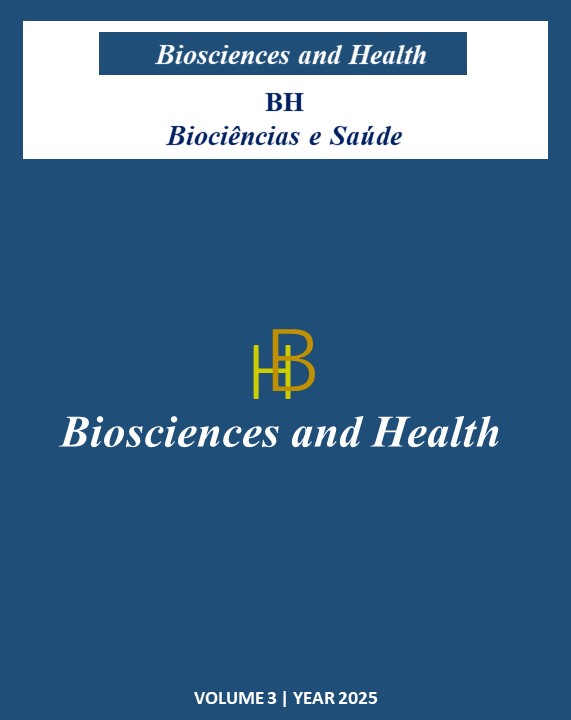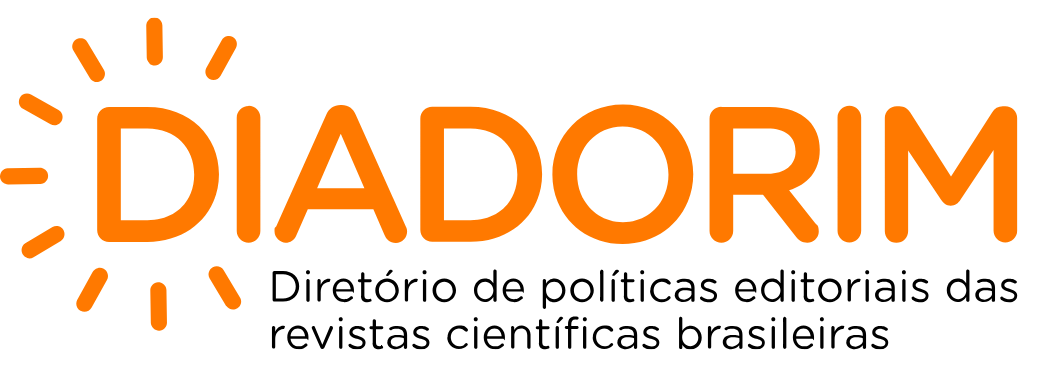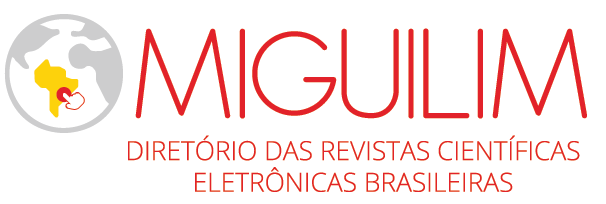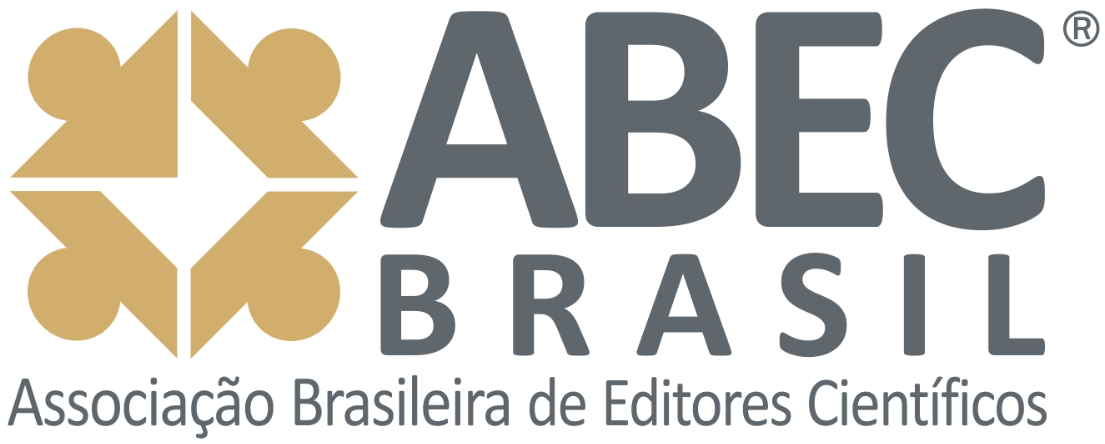All-on-Four protocol in the rehabilitation of atrophic maxillae: an integrative review of efficacy, safety, and impact on quality of life
DOI:
https://doi.org/10.62331/2965-758X.v3.2025.48Keywords:
All-on-four, Atrophic maxilla, Edentulous maxilla, Dental implants, Rehabilitation, Medical clinic, Quality of lifeAbstract
Tooth loss compromises chewing, aesthetic, and psychosocial functions, directly impacting quality of life. Conventional techniques, such as bone grafts or protocols requiring more implants, often involve surgical complexity and elevated risks, underscoring the need for effective and accessible methods. The All-on-Four protocol has emerged as an innovative approach for rehabilitating atrophic and edentulous maxillae, particularly in patients requiring less invasive solutions. This study aimed to analyze, through an integrative review, the efficacy, safety, and impact on quality of life of the All-on-Four protocol in rehabilitating atrophic maxillae. PubMed, SciELO, and BVS databases were consulted. Articles published in Portuguese and English (2005–2025), focusing on original studies, systematic reviews, and longitudinal research, were included. Out of 68 identified studies, 31 were selected after screening for relevance and methodological quality. The protocol demonstrated an implant survival rate exceeding 95% over 10 years, with a mean marginal bone loss of 1.2 mm and minimal complications such as screw fractures and peri-implantitis. Compared to techniques like All-on-Six, it exhibited reduced invasiveness, avoiding bone grafts and shortening recovery time. Studies also highlighted significant improvements in quality of life, with patient satisfaction regarding masticatory function and aesthetics. The All-on-Four protocol proved effective, safe, and predictable, offering biomechanical and psychosocial advantages over traditional methods. Its application promotes comprehensive rehabilitation, aligning oral health, physical well-being, and social reintegration, reinforcing its role as a priority strategy for cases of maxillary atrophy.
References
Oral Health in America: Advances and Challenges. Bethesda (MD): National Institute of Dental and Craniofacial Research(US); 2021 Dec. Section 1, Effect of oral health on the community, Overall well-being, and the economy. Disponível em: https://www.ncbi.nlm.nih.gov/books/NBK578297/
Mills A, Berlin-Broner Y, Levin L. Improving patient well-being as a broader perspective in dentistry. Int Dent J. 2023; 73(6):785-792. https://doi.org/10.1016/j.identj.2023.05.005
Sanches CDB, Arruda FJS de. Prótese protocolo com carga imediata em pacientes edêntulos totais: análise integrativa de vantagens, desvantagens e critérios de sucesso. BioscHealth. 2025; 3:1-7. https://doi.org/10.62331/2965-758X.v3.2025.59
Naujokat H, Kunzendorf B, Wiltfang J. Dental implants and diabetes mellitus-a systematic review. Int J Implant Dent. 2016; 2(1):5. https://doi.org/10.1186/s40729-016-0038-2
Pedro RE, De Carli JP, Linden MS, Lima IF, Paranhos LR, Costa MD, et al. Influence of age on factors associated with peri-implant bone loss after prosthetic rehabilitation over osseointegrated implants. J Contemp Dent Pract. 2017; 18(1):3-10. https://doi.org/10.5005/jp-journals-10024-1979
Wagner J, Spille JH, Wiltfang J, Naujokat H. Systematic review on diabetes mellitus and dental implants: an update. Int J Implant Dent. 2022; 8(1):1. https://doi.org/10.1186/s40729-021-00399-8
Reddy KS, Biswas S, Sarangi S, Chaurasia A, Reddy MP, Jose AT, et al. Impacto do tabagismo no implante dentário: uma revisão. Bioinformação. 2024; 20(12):1750-1753. https://doi.org/10.6026/9732063002001750
Silva AJC, Arruda FJS de. Desafios na implantodontia: biomateriais e sua contribuição na reabilitação de maxilas atróficas. BioscHealth. 2025; 3:1-7. https://doi.org/10.62331/2965-758X.v3.2025.71
Aghaloo T, Pi-Anfruns J, Moshaverinia A, Sim D, Grogan T, Hadaya D. The effects of systemic diseases and medications on implant osseointegration: a systematic review. Int J Oral Maxillofac Implants. 2019; 34:s35-s49. https://doi.org/10.11607/jomi.19suppl.g3
D'Ambrosio F, Amato A, Chiacchio A, Sisalli L, Giordano F. Do systemic diseases and medications influence dental implant osseointegration and dental implant health? an umbrella review. Dent J (Basel). 2023; 11(6):146. https://doi.org/10.3390/dj11060146
Hodgens A, Sharman T. Corticosteróides (em inglês). [Atualizado em 2023 1 de maio]. In: StatPearls [Internet]. Treasure Island (FL): StatPearls Publishing; 2025 Jan-. Disponível em: https://www.ncbi.nlm.nih.gov/books/NBK554612/
Kaur J, Khare S, Sizar O, et al. Vitamin D Deficiency. [Updated 2025 Feb 15]. In: StatPearls [Internet]. Treasure Island (FL): StatPearls Publishing; 2025 Jan-. Disponível em: https://www.ncbi.nlm.nih.gov/books/NBK532266/
Wu H-C, Tsai M-T, Hsu J-T. The effect of insertion angles and depths of dental implant on the initial stability. Applied Sciences. 2020; 10(9):3112. https://doi.org/10.3390/app10093112
Nulty A. A literature review on prosthetically designed guided implant placement and the factors influencing dental implant success. Br Dent J. 2024; 236(3):169-180. https://doi.org/10.1038/s41415-024-7050-3
Sharma EM, Smith KD. Facial Implants. 2024 Feb 26. In: StatPearls [Internet]. Treasure Island (FL): StatPearls Publishing; 2025 Jan. Disponível em: https://pubmed.ncbi.nlm.nih.gov/38753942/
Bugone É, Vicenzi CB, Cardoso MZ, Berra L, de Carli JP, Franco A, et al. The impact of oral rehabilitation with implants in nutrition and quality of life: a questionnaire-based survey on self-perception. J Clin Exp Dent. 2019; 11(5):e470-e475. https://doi.org/10.4317/jced.55647
Nand M, Mohammadnezhad M. Perception of edentulous patients and dental professionals towards care and maintenance of complete denture prostheses. Biomed Res Int. 2022; 2022:4923686. https://doi.org/10.1155/2022/4923686
Lixandru CI, Maniu I, Cernușcă-Mițariu MM, Făgețan MI, Cernușcă-Mițariu IS, Domnariu HP, et al. A post-implanto-prosthetic rehabilitation study regarding the degree of improvement in patients' quality of life: a before-after study. Healthcare (Basel). 2024; 12(14):1378. https://doi.org/10.3390/healthcare12141378
Manfredini M, Pellegrini M, Rigoni M, Veronesi V, Beretta M, Maiorana C, et al. Oral health-related quality of life in implant-supported rehabilitations: a prospective single-center observational cohort study. BMC Oral Health. 2024; 24(1):531. https://doi.org/10.1186/s12903-024-04265-y
Papaspyridakos P, Chen CJ, Gallucci GO, Doukoudakis A, Weber HP, Chronopoulos V. Accuracy of implant impressions for partially and completely edentulous patients: a systematic review. Int J Oral Maxillofac Implants. 2014; 29(4):836-45. https://doi.org/10.11607/jomi.3625
Gallucci GO, Hamilton A, Zhou W, Buser D, Chen S. Implant placement and loading protocols in partially edentulous patients: a systematic review. Clin Oral Implants Res. 2018; 29(Suppl16):106-134. https://doi.org/10.1111/clr.13276
Heiderich CMC, Tedesco TK, Netto SS, de Sousa RC, Allegrini Júnior S, Mendes FM, et al. Methodological quality and risk of bias of systematic reviews about loading time of multiple dental implants in totally or partially edentulous patients: an umbrella systematic review. Jpn Dent Sci Rev. 2020; 56(1):135-146. https://doi.org/10.1016/j.jdsr.2020.09.004
Whittemore R, Knafl K. The integrative review: updated methodology. J Adv Nurs. 2005; 52(5):546-53. https://doi.org/10.1111/j.1365-2648.2005.03621.x
Brackmann MS, Vieira R, Ribeiro Júnior PD, Sartori IAM, Padovan LEM. Avaliação da satisfação de reabilitações com implantes zigomáticos. Rev Odontol UNESP. 2017; 46(6): 357-361. http://dx.doi.org/10.1590/1807-2577.10317
Campos AL. Fundamentação dos implantes osseointegrados no tratamento e prevenção da síndrome da combinação. Innov Implant J. 2010; 5(2):60-64. Disponível em: https://pesquisa.bvsalud.org/portal/resource/pt/lil-581349
Coachman FG, Petrilli G, Andrade OS. Técnica all-on-four bimaxilar com função imediata. ImplantNews. 2011; 8(1):93-100. Disponível em: https://pesquisa.bvsalud.org/portal/resource/pt/lil-599192
Babbush CA, Kanawati A, Brokloff J. A new approach to the all-on-four treatment concept using a narrow platform Nobelactive implants. J Oral Implantol. 2013; 39(3):314-325. https://doi.org/10.1563/AAID-JOI-D-12-00223
RINALDI, L. Protocolo all-on-four: revisão de literatura. Journal of Multidisciplinary Dentistry. 2022; 10(3):50-56. https://doi.org/10.46875/jmd.v10i3.524
Jensen O, Cottam J, Adams M, Adams S. Buccal to lingual transalveolar implant placement for all on four immediate function in posterior mandible: report of 10 cases. J Oral Maxillofac Surg. 2011; 69(7):1919-22. https://doi.org/10.1016/j.joms.2011.02.042
Maló P, de Araújo Nobre M, Lopes A, Ferro A, Botto J. The all-on-4 treatment concept for the rehabilitation of the completely edentulous mandible: a longitudinal study with 10 to 18 years of follow-up. Clin Implant Dent Relat Res. 2019; 21(4):565-577. https://doi.org/10.1111/cid.12769
Moreira TCA, Costa SO, Silva Junior EV, Quidute LTC, Cravinhos JCP, Firmiano CSC, et al. Reabilitação com implantes em maxila atrófica por meio de cirurgia guiada utilizando a técnica “all-on-four”. Research, Society and Development. 2023; 12(5): e27512541725. http://dx.doi.org/10.33448/rsd-v12i5.41725
Downloads
Published
How to Cite
Issue
Section
License
Copyright (c) 2025 Stefânia Scavazini Araújo, Farid Jamil Silva de Arruda, Manuela Catalan do Carmo, Adriana Gonçalves Machado, Letícia Lara Oliveira Garcêz

This work is licensed under a Creative Commons Attribution 4.0 International License.









